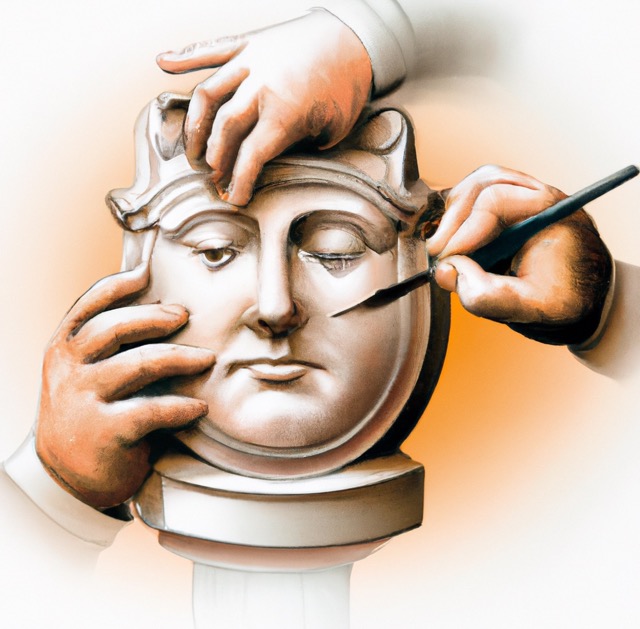Understanding ADHD for Improved Reading and Success


Table of Contents
Did you know that ADHD affects approximately 5% of children and 3% of adults worldwide? That's more than a hundred million people. The way their brains are wired gives them great strength in creativity and energy, but also difficulty with being productive, especially in areas requiring attention and focus, like reading.
ADHD's symptoms, such as inattention and hyperactivity, can create barriers to reading ability, concentration, comprehension, and even enjoyment of reading. Imagine being on a rollercoaster ride of thoughts while trying to focus on the lines of a book. It's not merely an obstacle; it's a widespread challenge that we need to address creatively and with understanding.
But understanding ADHD goes beyond recognizing the symptoms. By delving into the underlying challenges and causes of ADHD symptoms, we can open doors to more effective and personalized solutions that can apply to reading but also other areas of life.
The Two Pillars of ADHD: Inattention / Distractibility, Hyperactivity / Impulsivity
ADHD, ADD, or attention-deficit/hyperactivity disorder, often manifests itself as series of behaviors, or “symptoms”. These symptoms tend to cluster around two categories: inattention or distractibility, and hyperactivity or impulsivity. If you get officially diagnosed with ADHD, you’ll either be primarily the inattention/distractible type, the impulsive/hyperactive type, or a combination of both.
Here are some examples of those symptoms:
- Inattention / Distractibility
- Easily distracted by irrelevant stimuli
- Difficulty organizing tasks and activities
- Forgets daily tasks
- Overlooks details, making careless mistakes
- Hyperactivity / Impulsivity
- Fidgets with hands or feet
- Unable to stay seated or still in situations where expected
- Makes hasty decisions without considering the consequences
- Talks excessively
You can see how the symptoms of the inattention/distractibility type and hyperactivity/impulsivity type could be related. In fact, an ADHD diagnosis can sometimes be the "combined" type, where the person exhibits strong signs of both types.
Here’s how inattention/distractibility and hyperactivity/impulsivity might affect reading and productivity:
| Symptom Cluster | Effect on Reading | Effect on Productivity |
|---|---|---|
| Inattention/Distractibility | Zoning out or getting distracted while reading, having to re-read, resulting in a slower reading rate | Struggling to stay on task |
| Hyperactivity/Impulsivity | Restlessness during reading; Skipping words, lines, or pages | Constantly shifting between tasks; Rash decisions and errors |
The things is, many of these symptoms exist in varying degrees within all of us. Those diagnosed with ADHD experience these symptoms to such a severe degree that their lives are noticeably and negatively affected. As you can imagine, the symptoms of ADHD can affect productivity, decision-making, relationships, and overall well-being.
ADHD's symptoms are the result of complex interactions between both genetic and environmental factors that shape a person’s brain during development. It's not simply a lack of willpower, but a multifaceted neurological challenge that requires a multifaceted approach.
Luckily, we’ve come a long way in understanding how ADHD works and what we can potentially do about it to read, learn, and live better.
ADHD: Unable to Do What You Know
One of the most prominent voices in the field of ADHD research, Dr. Russell Barkley, offers a unique perspective on ADHD. He believes that the core issue with ADHD isn't about "knowing what to do" but rather about "doing what you know". This distinction emphasizes the disruption in the brain that affects the linkage between knowledge and performance. People with ADHD often understand what they need to do, but translating that knowledge into consistent action becomes the real challenge.

As an example, here’s a table that illustrates examples of “knowing what to do” but not being able to “do what you know” as it relates to someone with ADHD:
| Symptom Cluster | Knowing What to Do | Doing What You Know |
|---|---|---|
| Inattention/Distractibility | Understands what needs attention, knows tasks to complete. | Struggles to sustain focus, leading to difficulties in completing tasks, staying organized, following instructions. |
| Hyperactivity/Impulsivity | Knows when it's appropriate to be still or quiet. | Struggles to control restless impulses, leading to inappropriate movement, talking, or fidgeting. |
This framework helps to underscore the complexity of ADHD, showing that it's not merely about an inability to concentrate or control impulses. It's about the connection between knowledge, intention, and action, and how ADHD can disrupt this link.
What to Do: Make the Abstract Concrete, Physical, and Immediate
The symptoms of ADHD come down to the disrupted link between knowledge and performance in someone’s brain. You may know something, but because of the way your brain is wired, find it difficult to translate that knowledge into action.
As a result, it’s often helpful, in general and not just for those with ADHD, to transform the abstract knowledge that lives in our heads—such as knowledge about goals, consequences, relationships, and the past and future—into something concrete, physical, and immediate. When you turn abstract concepts like time, the past and future, into some sort of object that lives in your environment that you can see, feel, touch, and/or hear, you’re more likely to act upon that knowledge.

Here are some examples of making the abstract concrete, as it applies to reading and productivity:
- Use timers for reading or study sessions to break down tasks. By setting specific intervals for reading and taking breaks, individuals can create a structured, rewarding environment that makes the passage of time visual and abstract goals more concrete.
- Implement visual aids for tracking progress. Charts, graphs, or even simple checklists can make progress tangible and motivate continued effort.
- Create a structured and distraction-free reading environment. Minimizing distractions and creating a designated, clean space for reading primes the brain to focus on the task at hand and can thus greatly enhance productivity.
- Make physical reminders and notes. Writing down tasks, schedules, or reading goals and placing them in prominent places (like sticky notes on a computer or bathroom mirror) transforms abstract plans into concrete reminders, enhancing the chances of following through.
- Incorporate multi-sensory techniques. For reading comprehension, engaging multiple senses by using audio versions of text or hands-on activities to supplement reading can provide a tangible connection to abstract ideas, improving retention and understanding.
- Use technology and apps. There are various tools and apps designed to assist with focus and productivity, providing auditory or visual cues, tracking progress, or blocking distractions. These tools make the concepts of time management and concentration tangible and interactive. Here’s our list for the best tech tools and apps for reading with ADHD.
- Incorporate social engagement. Creating study or reading groups and committing to others can transform personal intentions into accountable, communal actions. The abstract idea of 'commitment' becomes a physical appointment with peers.
- Embrace mindfulness techniques. Techniques like deep breathing or meditation exercises can provide a tangible connection to the present moment, helping to calm hyperactivity and impulsivity. For someone struggling with ADHD, the physical sensation of breath can ground abstract thoughts and emotions
Understand to Overcome
ADHD is more than just a bunch of symptoms. It's a real challenge that affects a lot of people in reading and many other areas of life.
As we learned, ADHD can be thought of as a disruption between what someone knows and what they do. Understanding the underlying challenges of ADHD lets learn to work with it by turning what we know into real actions that improve our lives.
Terms like ADHD, Dyslexia, Autism, etc. are just names that scientists give when a person's brain works in a way that seriously affects their life. But it's important to remember that everyone's brain is a little different, even if they don't have a special name like ADHD or Dyslexia for how their brain works.
So what does this all mean? It means that for things like reading, and lots of other parts of life, there's no one right way to do things. Everyone has to figure out what works best for their own brain. By understanding how your brain works and trying different ways to do things, you can find what helps you the most. This way, you can do what you want in life and be the best you can be.
Inspired by this perspective on ADHD? Want to dive deeper into understanding ADHD and how to read effectively with it? Continue reading the rest of our guide to reading with ADHD and unlock the doors to success. Whether you have ADHD, know someone who does, or just want to enhance your reading and productivity skills, this understanding offers valuable insights and tools for all.
Read Up To 2-3X Faster, even with ADHD
Try reading with SwiftRead's software for a distraction-less, engaging, and fast-paced reading experience.
Jason, from 🇺🇸:
Absolutely game changing. I have ADHD and it's so hard to get through text. Getting it just "beamed into" my brain with SwiftRead is so much nicer.